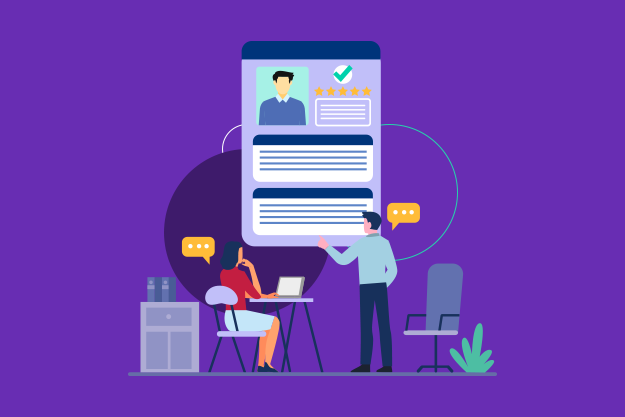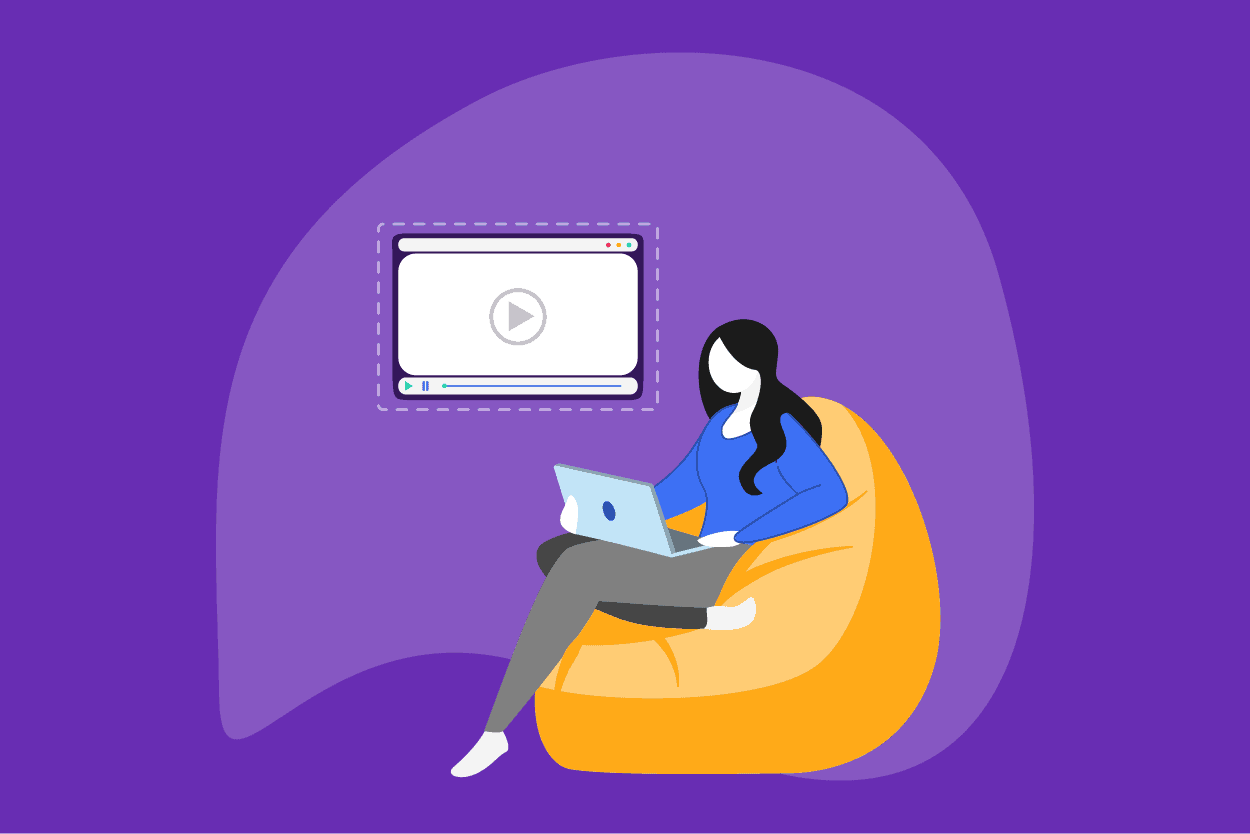How Industry Leaders are Adapting to Appeal to Top Talent
As vaccination rates and falling COVID-19 case counts enable a “return to normal” in the U.S., HR pros across all industries are re-evaluating their...
Connected Navigation Platform
Guiding to high-value care
Behavioral Health
Foster a mentally healthy workplace
EAP
Supporting holistic wellbeing
Virtual MSK Care
Reimagining musculoskeletal care
Virtual Primary Care
Powered by smart navigation
Surgery Centers of Excellence
Best-in-class surgical outcomes
Virtual Urgent Care
Immediate care, any hour of the day
Chronic Care
A new approach to chronic care
Integrations
Flexible to any strategy
8 min read
 Claire Wiseman Imber
:
May 26, 2021
Claire Wiseman Imber
:
May 26, 2021
Human resources professionals aren’t mental health professionals. Yet as employee mental health dropped to new lows during the pandemic, they’ve taken on the roles of spotting, responding to, and supporting employees through mental health challenges.
In a spring 2020 study of employees, 42% reported a decline in their mental health since the COVID-19 outbreak. Employees reported factors like a change in working conditions and furloughs specifically impacted their mental health.
Most U.S. employers offer short-term, acute mental health support through an Employee Assistance Program (EAP) or other similar benefits. We wanted to know what else HR professionals have done to support employees through mental health challenges. In what ways both big and small have they showed up for their people this year?
We asked, and they answered. Their responses run the gamut, from simple daily shifts to new working hours. No matter your company’s size or your own experience, there’s something to be learned here.
We are a company that puts a huge spotlight on mental health, so we do our best to not only translate that into our customer service, but also into how we interact with our employees. While they are all working remote, we have done our best to do “check-ins” often to make sure everyone is coping well and is able to handle their day-to-day responsibilities.
We have also made it a priority to celebrate our team’s successes often. Motivation stems from feeling a sense of accomplishment from the work you’re doing, so we like to reinforce that. The challenges have really all been solvable to an extent— no solution to remote work will completely equate to working in-office, but communicating with your team and taking advice from your employees can go a long way in working out the best ways to go about it.
Olamide Olowe, Founder, Topicals
When it comes to keeping my remote employees motivated, I always make sure to document and celebrate their successes every day. Even when it comes to the smallest and most minuscule wins at work, I’ve made it a point to cheer them on. Send your employees a thoughtful message, talk about everyone’s hard work at meetings, and tell them what an incredible job they’re doing every single day. I’ve really learned that it goes a long way.
Chris Vaughn, CEO, Saucey
We’ve focused on two primary areas across our companies, both of which have a significant impact on the well-being of team members.
First, No Meeting Fridays, equalling a four-day workweek. We’re virtual anyways, but now we require our team to block out Fridays. Some folks work on their open projects, others work on their yard or golf game. It’s like a summer Friday all year long. We’ve noticed an uptick in email activity earlier in the morning, later evenings, and over the weekend.
Second, we’ve implemented several financial wellbeing programs by partnering with Workforce Perks to offer an employer match student loan benefit, emergency savings, and education. We’re setting goals and building plans to help folks achieve their financial goals which can accelerate life milestones like buying a home or starting a family.
Ryan O’Donnell, Co-Founder and Chief of Staff, Replyify
At one of our smaller nationwide locations, all of our office staff worked from home during the pandemic, and because we received such positive feedback from our employees, gave our staff the continued option to work from home. Ninety-eight percent of our staff at this office voted to continue to work from home post-pandemic, which has worked exceptionally well, so much so that we didn’t have to renew the lease for that location.
We’ve learned that our office employees experience less stress working with a flexible schedule and are able to save costs on gas and car insurance commuting to the office.
Gabby Martin, HR Supervisor, Bio Recovery
The most impactful action we took to boost employee mental health was to introduce a four-day working week. It wasn’t as simple as saying don’t come in on Friday. We shifted the operations for employees to work toward task completion rather than presenteeism. Project management tools like ASANA and ClickUp (we started with one then moved to the other) really helped us realize this strategy.
Once an employee had completed all their weekly tasks they were essentially finished for the week. There being a global health pandemic in place we made sure to not overwhelm the teams. This gave employees two choices: to work on a flexible schedule, freeing up more time in the day for homeschooling, for example, or to be finished with all tasks by Thursday.
We had to sub-implement flexible working hours and no-meetings Fridays to ensure this ran smoothly. Honestly, it was very effective. Our reports of employee overwhelm and burnout were minimal in comparison to other companies across the world.
Rick Hoskins, Founder, Filter King
Business owners should find comprehensive benefits that cover the cost of regular therapy, alternative therapy, medication, addiction counseling, grief counseling, etc. As much as you can, because everyone addresses their mental health in different ways and requires different services.
That’s not to say your company can’t have internal processes to aid mental health. We have unlimited PTO which I feel helps greatly. Employees can take a mental health day and take the time they need to address any mental health issues without worrying about their pay or the permanency of their job.
During the pandemic, we also started up a group therapy session each morning. I’ll stress that this is in no way actual therapy and it’s not mandatory. It was really just a way for employees to share fears and concerns with each other completely free of judgment.
Dan Bailey, President, WikiLawn Austin Lawn Care
In an HR department, we are usually tasked with forecasting the recruitment outlook as well as changes in labor and employment law. Like everyone else, the pandemic has changed not just how we work but how we are feeling while at work. The pandemic scared us, isolated us, separated us physically, and in some cases, philosophically.
In recognition of these additional stressors, we have developed a Recovery and Mental Health Friendly Workplace initiative that openly recognizes the needs of employees who may be struggling with mental health or substance use disorders. While this primarily involves making positive changes to the organization’s culture, it also includes re-examining policies. For example, in some cases, a last chance agreement could allow an employee to retain their job if they take steps to complete treatment.
Additionally, we kept employees in the loop regarding the new initiative at an all-staff meeting. This included an overview of our commitment to creating this kind of workspace and the naming of an internal Peer Champion that was available to help employees start getting the help they need. We also shared the location of a list of resources that were available to staff whenever they need it, including a 24/7 resource line, the names of local mental health providers, as well as AA and NA groups. Our company likewise continues to train each employee about implicit bias and the need to replace stereotypical language with person-centered language.
Lakeesha Brown, VP of Human Resources, Mountainside Treatment Center
In my opinion, partnering with leadership is crucial to addressing employee mental wellbeing and providing the necessary support. We’ve done just this by creating a top-down culture of openness and honesty. It is the C-Suite that sets the tone and culture of a company, so if executives are not open and honest about their own baggage, employees will bottle up issues as well. That is why I would suggest having either your CEO, COO or some other top-level executive share their feelings and frustrations on an all-hands call. Hearing that others, especially leaders, within your company are struggling with Covid-related mental health issues as well, will really show people that they are not alone.
This will create a culture of openness and honesty. Open, free communication is the key to ensuring employee mental wellbeing. When you combine this with a leadership mandate for a delineation between work and personal life, this should help employees improve their outlook. One of the biggest struggles during Covid has been compartmentalizing work and home life. If employees understand there is clear guidance from management to break from their desk and enjoy their personal lives, they should feel enlightened to more properly compartmentalize work.
Janelle Owens, HR Director, Test Prep Insight
For many employees, the stress of the pandemic and working from home took a toll on their mental health. Now more than ever, many people need to find balance in their work and home life, as the line can often become blurred. The pandemic has also increased anxiety, PTSD, and trauma, which makes it even more essential to allow employees to take care of themselves and define their work life and their home life. Encouraging healthy amounts of rest does not take away from productivity, but rather increases it. At Luna Blanket, we emphasize the idea of taking care of yourself and self-healing so you are ready to take on the day’s challenges, within our company culture and to our customers.
Eddie Huai, CEO, Luna Blanket
I’d have to say our decision to add mental health days to employee sick leave was the biggest thing we did last year in terms of mental health support. Although our previous sick leave policy covered severe mental illness, it didn’t specifically include time off for less severe mental health issues. As we watched the effects of the pandemic take a mental toll on our employees, we thought it was important to prioritize general mental health in our company policies. Mental health days allow employees to take time away on the days they’re struggling with anxiety, depression, and other stigmatized health conditions. So far, our program has been well-received. It’s something we’re planning on continuing with even after the pandemic has wound down.
Daivat Dholakia, Director of Operations, Force by Mojio
A tool that I found to be extremely versatile in the past year is virtual conferencing apps like Skype and Zoom. My Team Leads have reported that their teams are actually more communicative now than before the pandemic. One theory we have is that our employees who were introverts now have a way to reach out to their team leaders and supervisors from the comfort of their own personal spaces via Skype’s instant message function.
This is why we constantly preach our virtual open-door policy, which means if your first-line supervisor is shown as being online and available through Skype then you should feel free to directly message them if you have any issues or concerns that you would like to discuss. Our productivity has also been positively affected by our virtual policies.
Allowing our employees to work remotely has actually increased their productivity and overall morale since we are flexible with our hours. If the employee has completed their caseload for that day, we permit them to log off and clock out. Since they are more focused on their quota for the day they are actively asking for feedback on their assigned task and projects, which they are completing at a faster rate
Alison Pearson, Head of HR, Hal Waldman and Associates
As much as we hear about “Zoom fatigue” and employees don’t want “mandatory fun” happy hours and such – I’ve learned not to generalize about Zoom happy hours, trivia and game nights, or other types of virtual activities. Some employees are missing the engagement that exists in an office setting and it’s really important to acknowledge their mental health challenges – and serve them. It’s easy to listen to the naysayers and cynics, who would rather “be working” or “have so much to do” but we actually want to engage those who want to engage.
Because everyone has been working so much and almost feels like they are their work product, actually taking time to enjoy each other’s company in a fun way can be really beneficial to an organization’s culture as well as the mental health of its people. It doesn’t exactly match going to someone’s cubicle to talk about your weekend, but maybe it can come close.
Also, there are tons of mental health tools available to companies, whether through their benefits provider, EAP program, or independent vendors. An HR partner of ours saw an ad for a workplace mental health app and made a business case for it to be purchased for the entire workforce. It was an investment made by a business to give workers a tool to manage their mental health during a really tough time.
Eric Mochnacz, Senior HR Consultant, Red Clover
Employee mental health is a priority for these HR pros, and though their responses are tailored to help their people, they can offer lessons for yours, too. As office re-openings and new work standards force employees to reckon with change, HR teams face new challenges too. After all, we spend 70% of our lives at work. The good news is, that spells an incredible opportunity to affect employee wellbeing for the better every day.

As vaccination rates and falling COVID-19 case counts enable a “return to normal” in the U.S., HR pros across all industries are re-evaluating their...

This year upended nearly every aspect of the working world. It meant learning about risk tolerance, stay-at-home orders, and “PPE.”

As we endure ongoing coronavirus-prompted shutdowns, many companies are reckoning with a “new normal.”